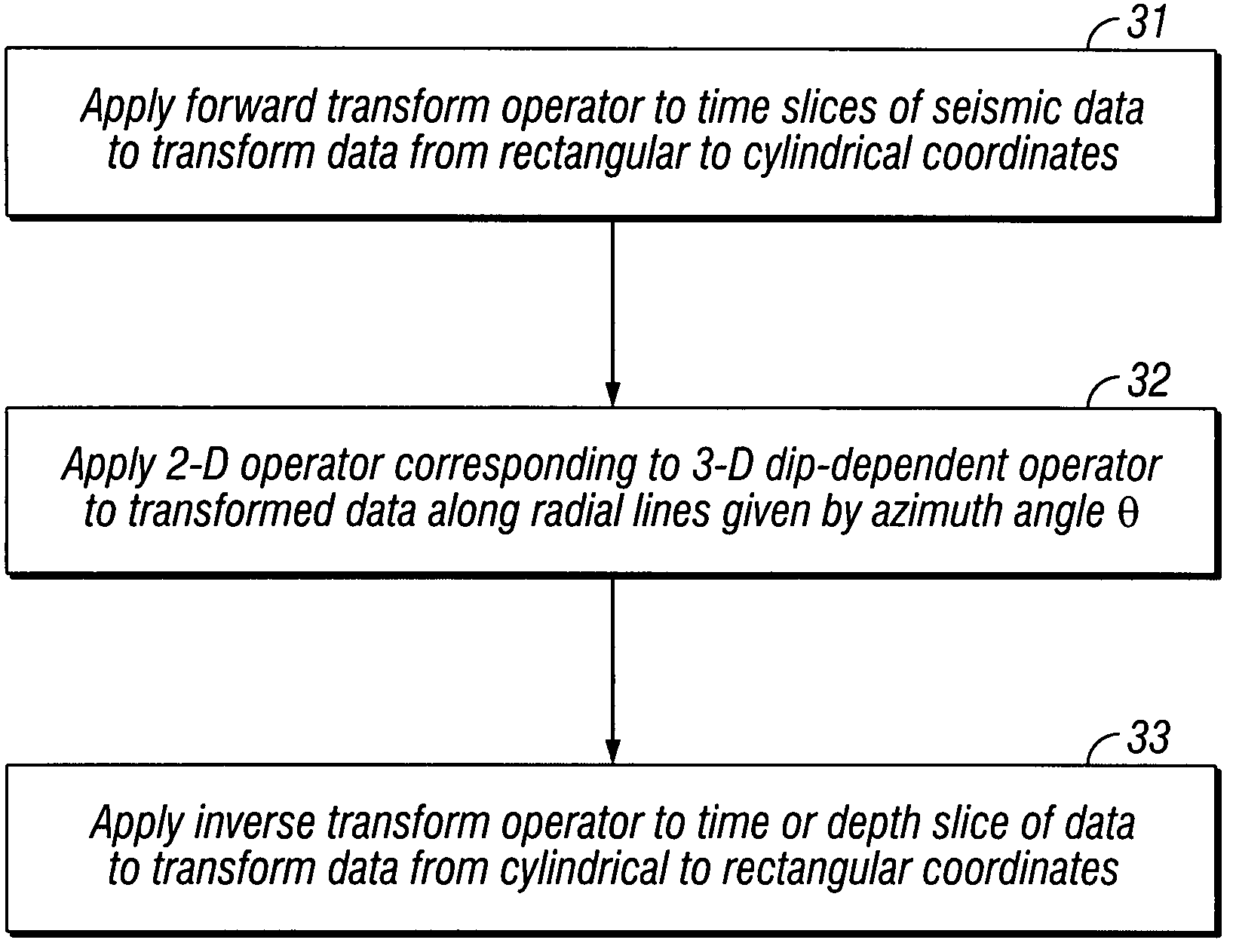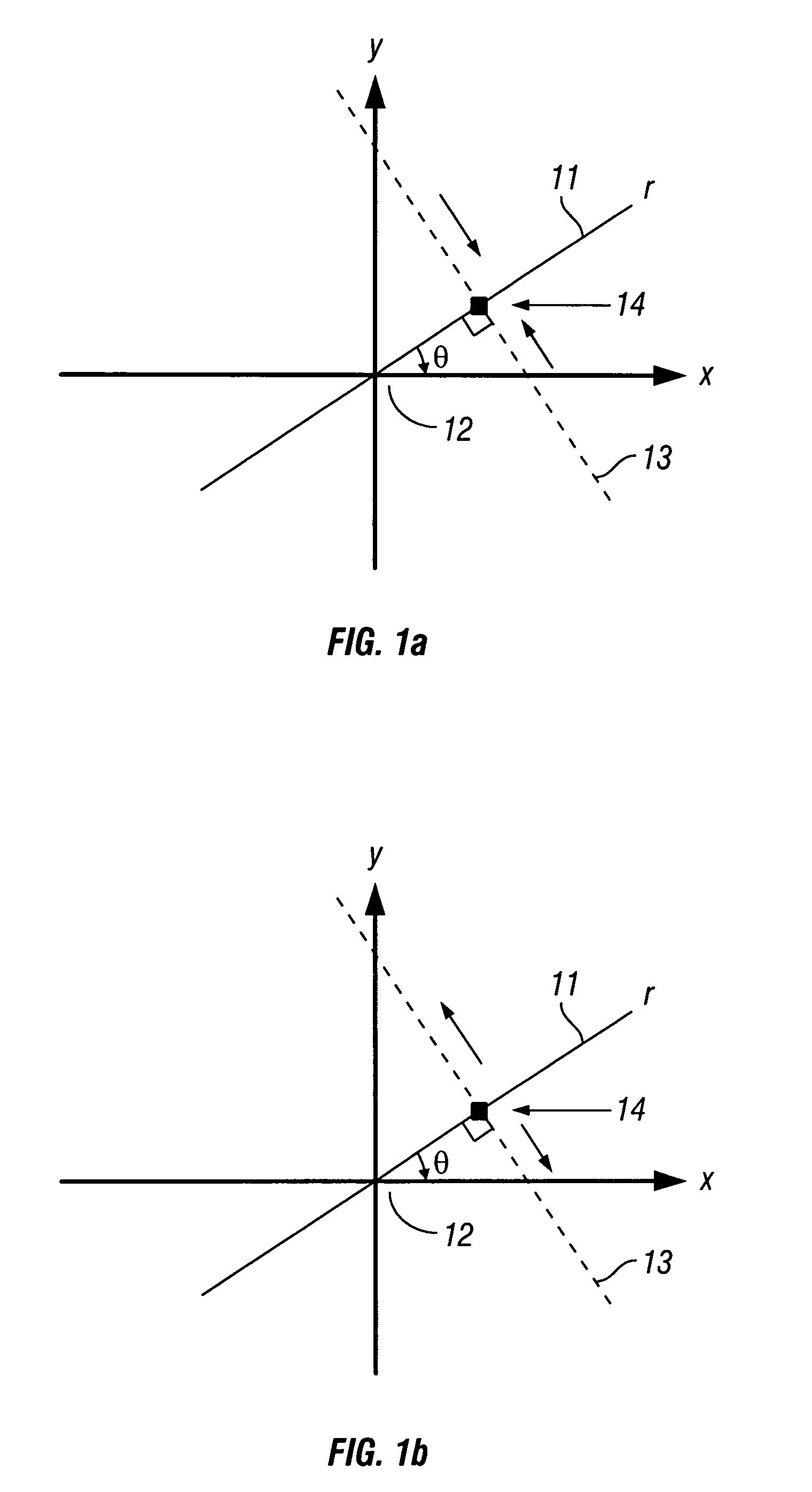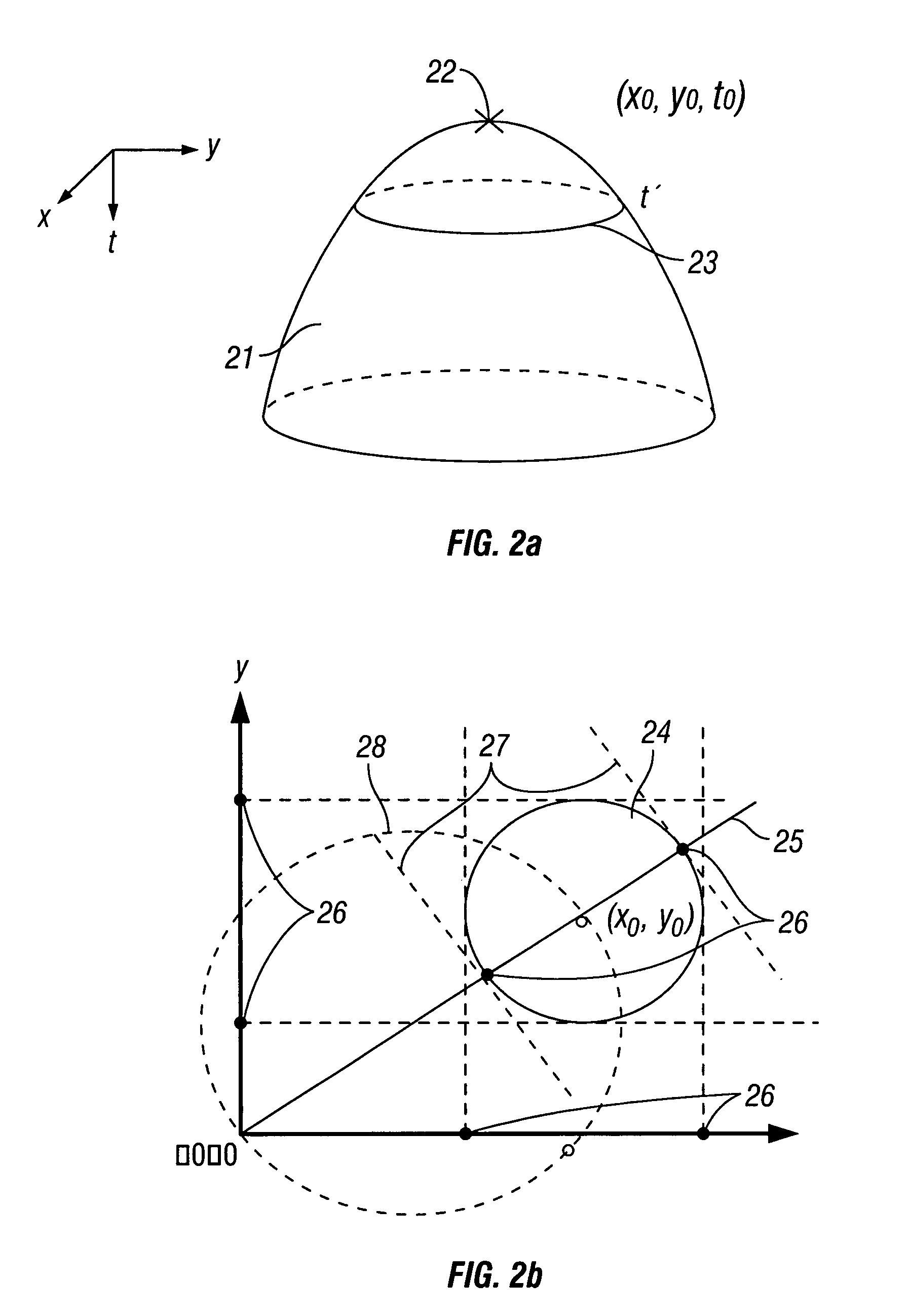Method for reducing 3-D migration operator to 2-D migration operator for inhomogeneous media
a technology of inhomogeneous media and migration operators, applied in the field of geophysical prospecting, can solve the problems of inability differences in acoustic impedance at the interface, and drilling wells to determine whether petroleum deposits are present or not, etc., and achieves computational complexity and computational complexity of three-dimensional (3-d) migration and the effect of reducing the number of operators
- Summary
- Abstract
- Description
- Claims
- Application Information
AI Technical Summary
Benefits of technology
Problems solved by technology
Method used
Image
Examples
example
[0067]This example illustrates the method of the invention as applied to 3D time migration to reduce it to a series of 2-D true-dip migration processes. FIGS. 2a-2d are diagrams illustrating seismic migration according to an embodiment of the method of the invention for performing 3-D seismic migration for generally inhomogeneous media. FIG. 2a shows a 3-D model of the diffraction hyperboloid 21 for a diffraction point 22 at (x0, y0, t0) in a vertically varying medium. The solid circle 23 designates a time slice at time t′.
[0068]The 3-D stacked data comprise a hyperbola 21 of revolution, as shown in FIG. 2a. In the first pass through the data, forward Radon transforms are applied on all time slices of the stacked data. The result from a particular time slice 23 at t′>t0 is shown in FIG. 2b. The diffraction energy appears as a circle 24 on the time slice 23. For a given radial direction 25, given by azimuth θ, the forward Radon transform results in significant energy at two locations...
PUM
 Login to View More
Login to View More Abstract
Description
Claims
Application Information
 Login to View More
Login to View More - R&D
- Intellectual Property
- Life Sciences
- Materials
- Tech Scout
- Unparalleled Data Quality
- Higher Quality Content
- 60% Fewer Hallucinations
Browse by: Latest US Patents, China's latest patents, Technical Efficacy Thesaurus, Application Domain, Technology Topic, Popular Technical Reports.
© 2025 PatSnap. All rights reserved.Legal|Privacy policy|Modern Slavery Act Transparency Statement|Sitemap|About US| Contact US: help@patsnap.com



